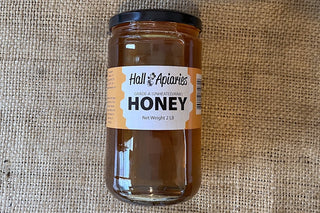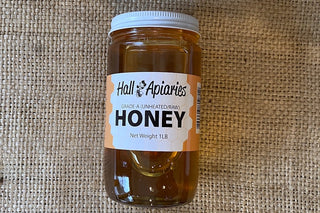Grade-A Unheated (Raw) Honey
Honey takes on the flavor, color, and aroma of the nectar the bees collect and carry back to the hive. Flowers blooming at different times of year produce different nectars. Honey extracted in Early Summer is produced with a lighter nectar. That lighter nectar results in a light, golden-colored honey with a "traditional" sweet honey taste. Late Summer Extraction, produced with a darker nectar, results in a dark amber or brown-colored honey. Late Summer honey has a bold and slightly less sweet taste than Early Summer.
In the Upper Valley region of New Hampshire and Vermont the major nectar sources that make up a majority of the honey crop are basswood (linden), white clover, dutch clover, honey suckle, locust, sumac, golden rod, japanese knotweed and asters. All honey is unheated (raw) and filtered by letting gravity settle out any large wax particles and particulates.
Grade-A Unheated (Raw) Honey
Honey takes on the flavor, color, and aroma of the nectar the bees collect and carry back to the hive. Flowers blooming at different times of year produce different nectars. Honey extracted in Early Summer is produced with a lighter nectar. That lighter nectar results in a light, golden-colored honey with a "traditional" sweet honey taste. Late Summer Extraction, produced with a darker nectar, results in a dark amber or brown-colored honey. Late Summer honey has a bold and slightly less sweet taste than Early Summer.
In the Upper Valley region of New Hampshire and Vermont the major nectar sources that make up a majority of the honey crop are basswood (linden), white clover, dutch clover, honey suckle, locust, sumac, golden rod, japanese knotweed and asters. All honey is unheated (raw) and filtered by letting gravity settle out any large wax particles and particulates.
Yankee Farmer's Market was developed to provide consumers with healthy, delicious, clean quality meats.


